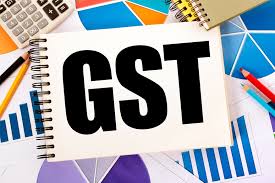How to calculate income tax liability under new tax regime
In the Union Budget 2020-21, the government announced a new tax regime with more slabs with lower tax rates. The new tax regime, however, took away the benefits of major exemptions and deductions that were available to taxpayers in the old regime.
Exemptions mean the taxpayer is free from the tax burden on income from certain sources or categories, for example – income from agriculture is exempt under the I-T rules.
On the other hand, deductions imply that certain investments and expenditures are kept aside while calculating tax liability of a taxpayer. For example, insurance premium, tuition fees, provident fund investments, etc allow taxpayer benefits of deductions under various sections of the Income Tax Act.
But these exemption and deduction benefits are applicable to those who opt for the old taxation regime, Under the new regime, a taxpayer has to forgo all these benefits in lieu of lower tax spread across many slabs.
Income tax rates and slabs in new tax regime:
Up to 2,50,000 – Nil
From 2,50,001 to 5,00,000 – 5 per cent
5,00,001 to 7,50,000 – 10 per cent
7,50,001 to 10,00,000 – 15 per cent
10,00,001 to 12,50,000 – 20 per cent
12,50,001 to 15,00,000 – 25 per cent
Above 15,00,000 – 30 per cent
Under the new tax regime, one has to pay the highest 30 per cent tax rate only in the case of his or her taxable annual income crossing the Rs 15,00,000-mark. In comparison, the 30 per cent slab comes into play in the old regime, if an individual’s taxable income goes past Rs 10,00,000 per annum.
The only deduction that a taxpayer can enjoy under the new regime is through section 80CCD (2) of the Income-tax Act, i.e., the employer's contribution to the Tier-I NPS account. The maximum deduction that can be claimed is 10 percent of basic salary plus DA in a financial year by an individual.
As simple calculations suggest, if someone is making investments as well as spending on healthcare and insurance premiums, which are covered under the deduction benefits of various Sections in the IT rules, then the individual must continue with the old regime. But in case a person with taxable income of over Rs 5 lakh doesn’t have any investment or expenses, which get tax deduction benefits, then he can easily opt for the new regime for lower tax liability.
Download our App to get knowledge updates: https://play.google.com/store/apps/details?id=com.app.gstmitra




Comments
Post a Comment